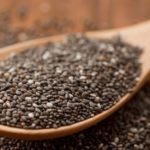Exploring the Science Behind Chili Peppers’ Spice
Chili is a versatile vegetable that is rich in essential nutrients such as vitamin C, carotene, and fiber. It is commonly utilized as a flavorful ingredient in various culinary preparations, including cooking and the production of chili sauce.
In chili, the composition includes capsaicin, which is an antioxidant that helps prevent food spoilage and provides protection for blood vessels. Additionally, it is the substance responsible for the spicy flavor commonly associated with chili.

When consuming chili, the compound capsaicin activates the release of substance P, a neurotransmitter that sends pain signals to the brain. Interestingly, extended exposure to capsaicin can actually diminish the perception of pain. As a result, capsaicin found in chili peppers is also utilized for the treatment of arthritis.
Exploring the Connection between Chili and Addiction
The capsaicin found in chili peppers has been found to stimulate the release of Endorphin, a chemical that produces a pleasurable sensation. This is one of the reasons why many individuals enjoy consuming chili peppers. Over time, individuals may develop a dependency on chili peppers, as their food may no longer taste as enjoyable without the addition of chili.
As previously stated, the consumption of chili gradually reduces its spiciness and difficulty. Consequently, numerous individuals consume chili with the ease and enjoyment of eating fruit, without experiencing any sensation of spiciness or heat.

Some individuals may have difficulty tolerating the pungent aroma, intense heat, and fiery flavor of chili due to their sensitivity to spicy food. Conversely, chili enthusiasts embrace the exhilarating experience of consuming this seasoning, as it enhances the overall taste of their meals. They revel in the tingling sensation on their taste buds and the invigorating heat that chili provides.
Potential Health Risks of Excessive Chili Consumption
Chili has numerous potential health benefits, including reducing joint pain, aiding in fat burning and weight loss. However, excessive consumption of chili can have detrimental effects. It may lead to discomforting symptoms associated with “heat in the body,” such as mouth sores, pimples, burning sensation in the stomach area, gastric ulcers, and in severe cases, even stomach cancer. Therefore, if you enjoy the taste of chili and wish to include it in your diet, it is advisable to consume it in moderation and avoid excessive intake.

Drinking water is a common but ineffective method for reducing the spiciness of chili. However, consuming milk is a more effective solution to alleviate the burning sensation caused by excessively spicy chili. Milk contains Casein, a chemical compound known for its ability to remove Capsaicin from taste buds.
Please see more information below:
References: http://khoahoc.tv
If you are someone who enjoys chili, it is advisable to consume it in moderation. Adding a small amount can greatly enhance the flavor. We hope that the provided information has addressed any inquiries from our readers.




































